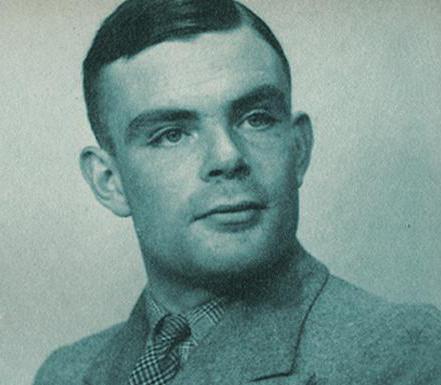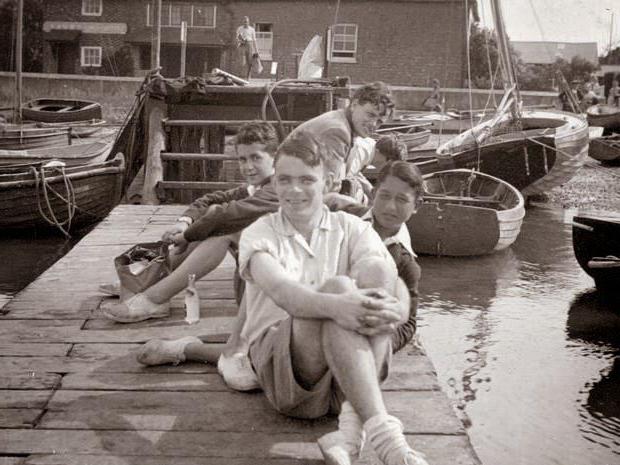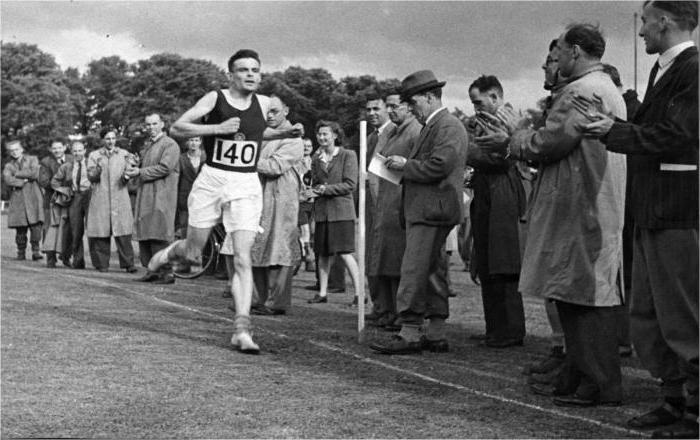Alan Matison Turing is a world-famous brilliant scientist, a code cracker, a computer science pioneer, a man with an amazing destiny who has had a significant impact on the development of computer technology.
Alan Turing: A Short Biography
Alan Matison Turing was born in London on June 23, 1912. His father, Julius Turing, was a colonial civil servant in India. There he met and married Alan's mother, Ethel Sarah. Parents lived permanently in India, and the children (Alan and John, his older brother) studied in private homes in England, where they received strict education.
Alan showed his abilities for exact sciences once during a picnic. To earn the approval of his father, the boy was able to find wild honey through simple inferences. To do this, he traced the lines along which the bees flew, and the direction of their flights. Then, mentally extending these lines, he found their intersection point, where he found a hollow with honey.

Alan's extraordinary abilities for exact sciences showed up during his studies at the prestigious Shernbor School. In 1931, as a mathematical scholarship student, the young man continued his studies at King's College of Cambridge University. Upon completion, he defended his thesis on the central limit probability theorem, which he rediscovered, not realizing the existence of a similar previous work. At the educational institution, Alan was a member of the College’s Scientific Society; his thesis was awarded a special prize. This gave the young man the opportunity to receive a good scholarship and to continue self-realization in the field of exact sciences.
Turing Machine
In 1935, the scientist Alan Turing first applied his abilities in the field of mathematical logic and began to conduct research that showed significant results a year later. He introduced the concept of a computable function that can be implemented on the so-called Turing machine. The project of this device had all the basic properties of modern models (step-by-step mode of action, memory, program control) and was a prototype of digital computers invented ten years later. In 1936, mathematician Alan Turing moved to America and got a job as a curator at Princeton University, in 1938 he received a Ph.D. and returned to Cambridge, rejecting the offer of mathematician John von Neumann to remain in this institution as an assistant.
British operation "Ultra"
In the same period, Britain announced the launch of Operation Ultra, the purpose of which was to listen to the conversations of German pilots and their transcripts. This issue was dealt with in the London-based department of the government School of Codes and Ciphers (the Main Encryption Unit of British Intelligence), which, due to the threat of a fascist attack, was urgently taken to Bletchley Park, located in the center of England.
Today it houses a museum of encoders and computers. It was in this secret place that intelligence data intercepted by receiving stations was received daily; the number of coded messages was measured in thousands of units. For each incoming text, the following frequencies were recorded: radio frequency, date, time of interception and preamble. The latter contained the identifier of the network, the call sign of the receiving station and the sender, the time of sending messages.
Winston Churchill - the Prime Minister of Great Britain - called Bletchy Park his chicken, laying golden eggs. The project manager was Alistair Denniston, a military intelligence veteran. He did not recruit cryptanalysts as cadre intelligence, but specialists of the broadest profile: mathematicians, linguists, chess players, Egyptologists, champions for solving crosswords. The talented mathematician Alan Turing also got into such a diverse company.
Turing vs. Enigma
The Turing department was entrusted with a specific task: working with encrypted texts created by the Enigma device, a machine patented in the Netherlands in 1917 and originally intended to protect banking operations. It was these models that the Wehrmacht actively used to transmit radiograms in operations conducted by the navy and aviation. Enigma ciphers at the beginning of World War II were the strongest on the planet. It was even believed that hacking them was almost impossible.

To understand the encoded text, it was necessary to acquire the same machine, know its initial settings, close the letters in the communication panel in a certain way, and start it all in the opposite direction. It should be borne in mind that the principles of coding and keys changed once a day. Wehrmacht cryptographers tried to complicate the cryptanalysis itself as much as possible with the transmission procedures: the message length did not exceed 250 characters, and they were transmitted in groups of 3-5 letters.
The hard work of cryptographers led by Turing was successful: a device was created that could decrypt Enigma signals. In addition to all sorts of mathematical tricks, the same stereotypical phrases used by the Germans to communicate, as well as any repeating texts, were used as hints. If the tips were not enough, then the enemy was provoked on them. For example, they pointedly mined a certain section of the sea, and then listened to the Germans' statements on this subject.
Alan Turing's success
As a result of painstaking work in 1940, the Alan Turing cryptanalytical machine “Bomb” was created, which is a huge cabinet (weight - one ton, front panel - 2 x 3 meters, 36 groups of rotors on it). The use of this device required special skills and depended directly on the qualifications of the personnel serving it. Over time, more than two hundred such machines were installed in Bletchley Park, which allowed to decrypt about 2-3 thousand messages a day.
Turing Alan was delighted with his work and the results achieved. He was only annoyed by the local authorities and budget cuts. Fortunately, after a series of official angry notes, the project took control of Winston Churchill, increasing its funding. Enigma and other German encryption machines were hacked, the Allies were able to keep abreast of the uninterrupted flow of valuable intelligence.
For more than a year, the Germans had no idea about the existence of the “Bomb”, but, having discovered a leak of information, they made great efforts to maximize the complexity of ciphers.
However, this did not frighten Turing: he easily coped with the new problem, and after a month and a half the British gained access to enemy information.
The absolute reliability of the cipher during the war did not raise any doubts among the Germans, who until the very end were looking for the reasons for the leak of valuable information anywhere, except in the Enigma. The disclosure of the Enigma code dramatically changed the course of World War II. Valuable information helped not only to secure the British Isles, but also to carry out appropriate preparations for large-scale operations on the continent planned by the German side. The success of British cryptographers was an important contribution to the victory over Nazism, and Turing Alan himself in 1946 received the award of the Order of the British Empire.
Eccentricities of computer genius
Contemporaries described Turing as a slightly eccentric person, not too charming, rather bile and endlessly hardworking.
- Being allergic, Turing Alan preferred a gas mask to antihistamines. In it, he went to offices during the flowering period of plants. Perhaps this strangeness was explained by the unwillingness to fall under the influence of side effects of the drug, namely drowsiness.
- The mathematician had one more peculiarity in relation to his bicycle, for which a chain flew at certain intervals. Turing Alan, not wanting to fix it, counted the pedals, at the right moment got off his bike and straightened the chain with his hands.
- A talented scientist fastened his own mug in Bletchley Park to a battery so that it would not be stolen.
- Living in Cambridge, Alan never set the clock according to the signals of the exact time, he calculated it mentally, fixing the location of a particular star.
- Once Alan, having learned about the depreciation of the English foot, melted the coins he had and buried the obtained silver bar somewhere in the park, after which he completely forgot the place of the cache.
- Turing was a good athlete. Feeling the need for exercise, he ran a long distance, determining for himself that he had succeeded in this sport. Then, in record time, he won the 3- and 10-mile distances of his club, and in 1947 he took fifth place in the marathon.

The eccentricities of Alan Turing, whose merits for Britain are simply invaluable, few were puzzled. Many colleagues recall the excitement and enthusiasm with which the genius of computer science took up any idea that interested him. Turing was looked upon with great respect, since he was distinguished by original thinking and his own intellect. A talented mathematician, having all the makings of a qualified teacher, was able to solve and easily explain any, even the most unusual problem.
Alan Turing: a contribution to computer science
In 1945, Alan refused to work as a lecturer at Cambridge University and, on the recommendation of M. Newman, moved to the National Physical Laboratory, where at that time a group was formed to design and create an ACE computer. Within 3 years (from 1945 to 1948) - the period of the group's existence - Turing made the first sketches and made several important proposals for its construction.
The scientist submitted the ACE report to the NFL Executive Committee on March 19, 1946. The accompanying note attached to it stated that the work was based on the EDVAG project. However, the project had a large number of valuable ideas that belonged directly to the English mathematician.
Software for the first computer was also written by Alan Turing. Computer science without the painstaking labors of this talented scientist might not have reached the level it is today. Then the first chess program was written.
In September 1948, Alan Turing, whose biography was connected with mathematics all his life, was transferred to work at the University of Manchester. Nominally, he took the post of deputy director of the laboratory of computers, in reality, he was listed in the mathematical department of M. Newman and was responsible for programming.
Evil joke of fate
The English mathematician, who continued cooperation with intelligence after the war, was involved in a new task: deciphering Soviet codes. At this moment, fate played a trick on Turing. Once his house was robbed. The note left by the thief contained a warning about the extreme undesirability of contacting the police, but the outraged Alan Turing immediately called the police station. The investigation revealed that the robber was one of Alan’s lover’s friends. In the process of testifying, Turing had to admit to his unconventional orientation, which in those years in England was criminally punishable.
A high-profile trial of a famous scientist lasted quite a long time. He was offered either a two-year prison sentence or hormone replacement therapy.
Alan Turing (photo of recent years above) chose the second. As a result of treatment with powerful drugs, which lasted for a year, Turing developed impotence, as well as gynecomastia (breast enlargement). Criminally prosecuted Alan was suspended from secret work. In addition, the British had concerns that homosexuals might be recruited by Soviet spies. The scientist was not charged with espionage, but was forbidden to discuss his work in Bletchley Park.
Alan Turing's Apple
The story of Alan Turing is sad to the core: a mathematical genius was dismissed from service and forbidden to teach. His reputation was completely ruined. At 41, the young man was thrown overboard the usual rhythm of life, left without his beloved job, with a broken mind and ruined health. In 1954, Alan Turing, whose biography still excites the minds of many people today, was found dead in his own house, and a bitten apple lay on the bedside table next to the bed. As it turned out later, it was stuffed with cyanide. So Alan Turing recreated the scene from his favorite fairy tale "Snow White" in 1937. According to some reports, this is precisely why the fruit has become the emblem of the world famous computer company Apple. In addition, the apple is still the biblical symbol of the knowledge of sin.
The official version of the death of a talented mathematician is suicide. Alan's mother believed that the poisoning happened by accident, because Alan always inadvertently worked with chemicals. There is a version that Turing deliberately chose this method of passing away from life in order to allow his mother not to believe in suicide.
Rehabilitation English Maths
The great mathematician was rehabilitated posthumously. In 2009, British Prime Minister Gordon Brown publicly apologized for the persecution suffered by a computer genius. In 2013, Turing was officially pardoned for his obscenity with Elizabeth II, Queen of Great Britain.
Alan Turing's work was not only in the development of information technology: at the end of his life, the scientist devoted himself to biology, namely, he began to develop a chemical theory of morphogenesis, which gave full scope for combining the abilities of an exact mathematician and a gifted philosopher full of original ideas. The first sketches of this theory are described in the preliminary report of 1952 and the report that appeared after the death of the scientist.
The most prestigious award in the field of computer science is the Turing Award. Its presentation is made annually by the Association of Computer Engineering. This award is being sponsored, currently worth $ 250,000, by Google and Intel. The first such important award in 1966 was awarded to Alan Perlis for creating compilers.